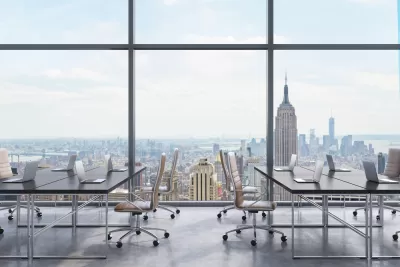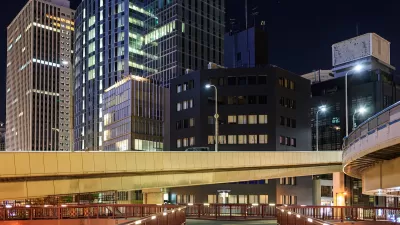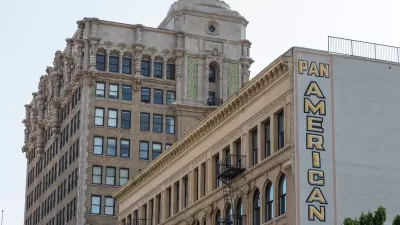Converting office buildings to housing is almost always possible, but, thanks in part to design changes in newer office buildings, it can often be cost-prohibitive.

As many office buildings in urban cores remain vacant post-pandemic, the call to convert them into housing or other uses, a process known as adaptive reuse, has grown louder. But as Emily Badger and Larry Buchanan explain in The New York Times, “The idea, however, is less like a sweeping fix and more like a set of intricate puzzles — a different one for each building.”
To illustrate how conversions can work, and why they’re more effective in older buildings, the authors describe two New York City buildings, one pre-war and one built 40 years later. Older office buildings “make for simpler conversions because the same logic that shaped how they were designed as offices a century ago determines how apartments are planned today. Both share a rule of thumb that no interior space be more than 25 to 30 feet from a window that opens.”
Additionally, older buildings have operable windows and are by and large more affordable than newer office towers. “It’s an elegant circle of city life: The very qualities that have made these buildings outdated as offices now make them ideal candidates for apartments.” In more modern times, the invention of air conditioning and the fluorescent light bulb made it so that offices were no longer constrained to the same needs as before. Buildings could have deeper floor plates, creating more spaces that are far from any natural lighting. Meanwhile, modern office windows that don’t open would have to be replaced at great expense.
Ultimately, the authors write, “Developers and architects who’ve been doing this niche work for years say that few conversions are physically impossible if you’re creative enough.” But cities must create economic incentives to make the process cost-effective. “Such changes would not single-handedly solve any city’s housing woes, or fill all of its office vacancies. But both problems ultimately require more than one fix anyway.” Plans like New York Mayor Eric Adams' proposal to simplify the process for office conversions could yield tens of thousands of new housing units.
FULL STORY: So You Want to Turn an Office Building Into a Home?

Montreal Mall to Become 6,000 Housing Units
Place Versailles will be transformed into a mixed-use complex over the next 25 years.

Planetizen Federal Action Tracker
A weekly monitor of how Trump’s orders and actions are impacting planners and planning in America.

DARTSpace Platform Streamlines Dallas TOD Application Process
The Dallas transit agency hopes a shorter permitting timeline will boost transit-oriented development around rail stations.

Interactive Map Reveals America's “Shade Deserts”
Launched by UCLA and American Forests to combat heat-related deaths, the tool maps the shade infrastructure for over 360 U.S. cities.

Bicycles and Books — In Sacramento, Libraries Now Offer Both
Adult library card holders can check out e-bikes and e-trikes for up to one week.

Colorado Landfills Emit as Much Pollution as 1M Cars
Landfills are the third-largest source of methane pollution in Colorado, after agriculture and fossil fuel extraction.
Urban Design for Planners 1: Software Tools
This six-course series explores essential urban design concepts using open source software and equips planners with the tools they need to participate fully in the urban design process.
Planning for Universal Design
Learn the tools for implementing Universal Design in planning regulations.
City of Mt Shasta
City of Camden Redevelopment Agency
City of Astoria
Transportation Research & Education Center (TREC) at Portland State University
US High Speed Rail Association
City of Camden Redevelopment Agency
Municipality of Princeton (NJ)





























